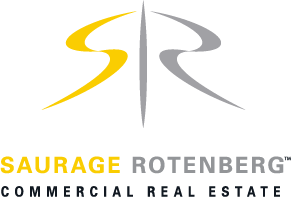Article submitted by Danny Watts, Sales and Leasing Agent at Saurage Rotenberg Commercial Real Estate
Written by Jennifer Popovec [May 2, 2011 / RetailTrafficMag.com ]
“Historically, we’ve been very limited in what we do for retail incentives,” Bryant says. “Our city council is conservative and reluctant to get into the retail incentive game. Our decision to offer incentives for the outlet center was more of a defensive posture rather than offensive posture.”
Indeed, the city found itself between the proverbial rock and a hard place. “The lifeblood for our operating budget is sales tax, and it would have really hurt us for those tax dollars to go to Yukon,” Bryant explains. “Plus, we were worried about the outlet center cannibalizing an existing mall nearby. We absolutely didn’t want it to go to Yukon, which has been very aggressive in pursuing retail projects by offering incentives. That’s why we were so aggressive with our own incentives.”
The incentive package included both infrastructure improvements and a sales tax rebate, which refunds a portion of the center’s sales tax to retailers. The city allocated $3.9 million in general obligation bonds to fund the installation of new traffic signals, the construction of a new street and turn lane and the creation of drainage improvements. The sales tax rebate could be worth up to $5.5 million over five years, if the development meets certain requirements.
Michael Lebovitz, executive vice president of development and administration for CBL & Associates, says the city “really stepped up and provided incentives that made it the best place for the center to be built.”
Oklahoma City is not unique. It is one of hundreds—if not thousands—of cash-strapped municipalities across the United States that are trying to manage through difficult fiscal situations. Many cities and counties face shortfalls in revenues at the same time that expenditures are rising. Politicians across the country are juggling how to cut costs and raise revenues.
For retail developers, that means that incentives are available. Malls and shopping centers can deliver sales and property tax revenues for years. As a result, municipalities may provide incentives in the short term to make new developments a reality.
To read this article in its entirety click HERE.
To view this week’s Featured Property click HERE.
Danny Watts, a commercial real estate sales and leasing specialist with Saurage Rotenberg Commercial Real Estate, is a graduate of Louisiana State University (LSU). He has over 20 years experience in commercial real estate brokerage and appraisal. His areas of expertise include commercial and industrial brokerage and leasing; multi-family brokerage; lease negotiations; tenant build outs; market analysis and insight; and feasibility and valuation analysis. Danny is a member of the Commercial Investment Division (CID) of the Greater Baton Rouge Association of REALTORS®, a board member of the Perkins Road Historic Merchants District Association, and has served as a vice president for Literacy Works of Baton Rouge.
Saurage Rotenberg Commercial Real Estate is a member of the Baton Rouge Area Chamber of Commerce (BRAC); the West Baton Rouge Chamber of Commerce; the Baton Rouge Growth Coalition; the Baton Rouge Better Business Bureau; the Louisiana Commercial Data Base (LACDB); and the International Council of Shopping Centers (ICSC). Several agents, on an individual basis, are members of the Society of Industrial and Office Realtors® (SIOR), the Certified Commercial Investment Member Institute (CCIM); the National Association of REALTORS® (NAR); and the Greater Baton Rouge Association of REALTORS® Commercial Investment Division (CID).


